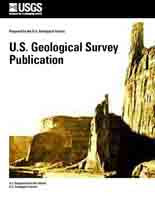This map is one of seven 1:24,000-scale (7.5-minute) quadrangle maps of the surficial geology of the Memphis, Tennessee, area--part of a series of urban hazard maps. Wind-deposited silt and clayey silt (loess) is the predominant surficial deposit in this quadrangle. The loess was deposited as dust during the last major continental glaciation of the region and it covers the upland to depths of 4.5-16 m. River alluvium (unit Qal), which is chiefly a sandy and gravelly sand deposit about 30 m thick, underlies the Mississippi River floodplain. This unit supports extensive artificial fill and infrastructure used for shipping storage and petroleum processing and storage. Based on paleoliquefaction structures (sand boils) documented in Mississippi River alluvium elsewhere, this unit probably has the potential to liquefy during strong earthquake shaking. No paleoliquefaction structures were observed within the Southwest Memphis quadrangle. Another deposit in the quadrangle is silty alluvium of the Nonconnah Creek floodplain, and is 1-10 m thick. Sparse, unconsolidated pebbly sand deposits are 0.5-3 m thick and make up point bars and channel deposits of Nonconnah Creek.


